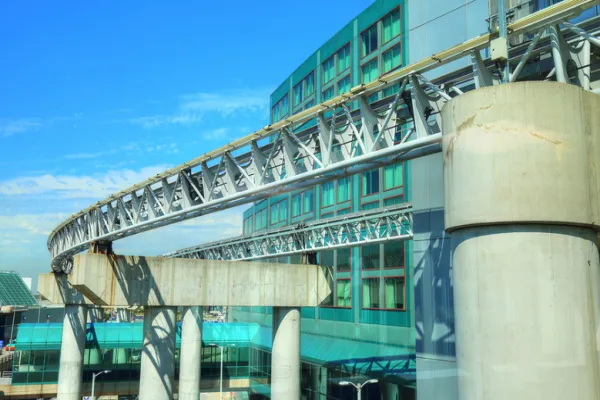
Two years ago economists Timothy Kehoe of the University of Minnesota and Edward Prescott, a senior adviser at the Federal Reserve Bank of Minneapolis, published a collection of essays entitled Great Depressions of the Twentieth Century . These essays examine the economic torpor of the U.S. and Europe during the 1930s, along with other depressions from Latin America in the 1980s (Argentina, Brazil, Chile and Mexico) to Japan in the following decade.
The authors define a "great depression" as a prolonged period of economic weakness that results in an economy’s shrinking 20 percent or more below its trend growth rate. Defined in this fashion, a depression results from either poor productivity growth, a decline in the number of hours worked or some combination of both.
Kehoe and Prescott’s bunch of economists dismiss the Keynesian view that depressions are an example of market failure. Rather, they examine severe economic downturns using a general equilibrium framework. They also reject Milton Friedman’s monetarist explanation of the Great Depression. Friedman claimed that if only the Federal Reserve Board hadn’t let the money supply collapse in the early 1930s, there would have been no depression.
Contra Friedman, professor Lee Ohanian of UCLA observes that manufacturing hours in the U.S. had declined by nearly 30 percent by September 1930, before the banking crisis had erupted and the money supply collapsed. Besides, the monetarist view fails to explain why other countries such as France and Canada, which experienced no bank failures, suffered severe economic collapses in the 1930s.
If monetary policy mistakes and market failures can’t explain depressions, what does? Well, misguided government policy is responsible for creating severe and prolonged periods of below-trend growth, in the view of Kehoe and company. Adam Smith famously emphasized the role played by competition in economic progress. Yet over the past century, governments have increasingly responded to economic crises by reducing competitive pressures in the hope of saving jobs.
President Franklin D. Roosevelt’s National Recovery Act of 1934 encouraged industrial cartels, fixed minimum prices for many goods and services and prescribed output quotas for businesses. Although the New Deal is widely considered to have brought America out of depression, output remained some 27 percent below trend in 1939.
Economies are also likely to experience a declining growth trend when governments become overly involved in the allocation of capital. Faced with a crisis in the early 1980s, the Mexican government nationalized the banking system. The state-owned banks were later directed to supply cheap loans to favored businesses, regardless of their productivity. The Mexicans also prevented competition in the oil industry, its largest export earner, which to this day is dominated by the hugely inefficient Pemex. By 1995 the Mexican economy was some 40 percent below its precrisis trend level.
Government activities to keep people in jobs likewise promote inefficiency. Japanese policymakers in the 1990s encouraged firms to stick with their guarantees of lifetime employment. To this end banks were allowed to conceal bad loans and directed to continue lending to "zombie" businesses, which otherwise would have failed. Argentina in the 1980s went even further down this route, keeping unemployment artificially low by having local governments and state-owned enterprises provide jobs. By the end of the decade, this job-padding accounted for about a quarter of Argentinean employment.
Policies that promote inflexibility in the labor markets tend to reduce employment. Yet at times of crisis politicians find it irresistible to move in this direction. As professor Ohanian observes, after the 1929 crash, Herbert Hoover directed businesses to maintain wages. As a result, real wages rose at a time when other prices were declining, which hurt corporate profits and discouraged both investment and employment. Germany and France also experienced rising real wages during the early years of the Great Depression. In 1935 the Roosevelt administration sponsored the National Labor Relations Act, which increased labor bargaining power and legalized sit-down strikes. Unemployment in the U.S. remained high throughout the 1930s.
Welfare policy may also reduce incentives to work. After World War I the British raised unemployment benefits to a level approaching half of the average wage level. This generous dole, together with increasing union militancy, contributed to the high structural unemployment that Britain experienced in the 1920s.
Economic growth is fostered not only by domestic competition. Foreign trade also promotes an efficient distribution of resources, as David Ricardo observed two centuries ago. According to the law of comparative advantage, a move toward economic protectionism is likely to lower output. For this reason the Smoot-Hawley Tariff Act of 1930, which raised tariffs on U.S. imports and triggered a beggar-thy-neighbor response from other countries, is generally agreed to have been one of the worst economic policy blunders in history.
In addition, government policies that discourage investment — either by raising corporate taxes, increasing regulation or crowding out private investment with excessive public spending — are likely to damage future growth prospects.
Over the past couple of years, government actions around the world have been directed at forestalling the credit crunch. However, many policies are not beneficial for future economic growth. Politicians everywhere are trying to influence the credit policies of bailed-out banks. Lobbyists from every crisis-prone sector scream out for protection. The "cash for clunkers" program only ensured that excess capacity continues in the auto industry.
Economic nationalism has resurfaced, as the "Buy America" and similar policies in other countries seek to prevent the money from stimulus programs from seeping abroad. Government policies, such as Germany’s Kurzarbeit program of subsidizing workers on reduced hours, are preventing the labor market from clearing. This growing interference of government in the economy bodes ill for future productivity growth.
Around the world ballooning government deficits threaten future fiscal crises, which in turn raise the risk of rising inflation. The credit crunch is over. Let’s hope it’s not followed by another Great Depression.
Edward Chancellor is the author of Devil Take the Hindmost and a senior member of GMO’s asset allocation team.






